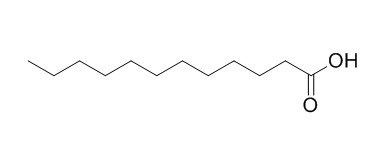Related compounds Melting point 43.2 °C Boiling point 298.9 °C Appearance White powder | Formula C12H24O2 Molar mass 200.3178 g/mol Density 880 kg/m³ | |
 | ||
Coconut oil the benefits of lauric acid health hacks thomas delauer
Lauric acid or systematically, dodecanoic acid, is a saturated fatty acid with a 12-carbon atom chain, thus falling into the medium chain fatty acids, is a white, powdery solid with a faint odor of baby oil or soap. The salts and esters of lauric acid are known as laurates.
Contents
- Coconut oil the benefits of lauric acid health hacks thomas delauer
- Lauric acid coconut oil 1
- Occurrence
- In various plants
- Properties
- Niche uses
- Potential medicinal properties
- References
Lauric acid coconut oil 1
Occurrence
Lauric acid, as a component of triglycerides, comprises about half of the fatty acid content in coconut milk, coconut oil, laurel oil, and palm kernel oil (not to be confused with palm oil), Otherwise, it is relatively uncommon. It is also found in human breast milk (6.2% of total fat), cow's milk (2.9%), and goat's milk (3.1%).
In various plants
Properties
Like many other fatty acids, lauric acid is inexpensive, has a long shelf-life, is non-toxic and is safe to handle. It is used mainly for the production of soaps and cosmetics. For these purposes, lauric acid is reacted with sodium hydroxide to give sodium laurate, which is a soap. Most commonly, sodium laurate is obtained by saponification of various oils, such as coconut oil. These precursors give mixtures of sodium laurate and other soaps.
Niche uses
In the laboratory, lauric acid may be used to investigate the molar mass of an unknown substance via the freezing-point depression. The choice of lauric acid is convenient because the melting point of the pure compound is relatively high (43.8 °C). Its cryoscopic constant is 3.9 °C·kg/mol. By melting lauric acid with the unknown substance, allowing it to cool, and recording the temperature at which the mixture freezes, the molar mass of the unknown compound may be determined.
Potential medicinal properties
In vitro experiments have suggested that some fatty acids including lauric acid could be a useful component in a treatment for acne, but no clinical trials have yet been conducted to evaluate this potential benefit in humans.
Lauric acid increases total serum cholesterol more than many other fatty acids. But most of the increase is attributable to an increase in high-density lipoprotein (HDL) (the "good" blood cholesterol). As a result, lauric acid has been characterized as having "a more favorable effect on total HDL cholesterol than any other fatty acid [examined], either saturated or unsaturated". In general, a lower total/HDL serum cholesterol ratio correlates with a decrease in atherosclerotic risk. Nonetheless, an extensive meta-analysis on foods affecting the total/LDL serum cholesterol ratio found in 2003 that the net effects of lauric acid on coronary artery disease outcomes remained uncertain.
